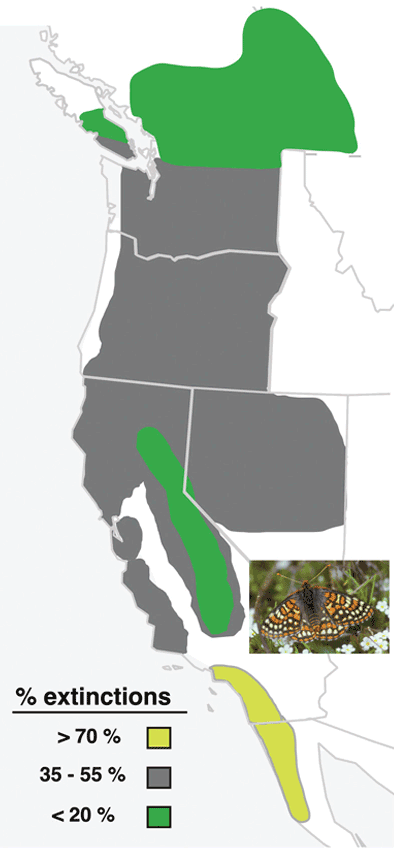The content of this website is no longer being updated. For information on current assessment activities, please visit http://www.globalchange.gov/what-we-do/assessment
Butterfly Range Shifts Northward

As climate warms, many species in the United States are shifting their ranges northward and to higher elevations. The map shows the response of Edith’s checkerspot butterfly populations to a warming climate over the past 136 years in the American West. Over 70 percent of the southernmost populations (shown in yellow) have gone extinct. The northernmost populations and those above 8,000 feet elevation in the cooler climate of California’s Sierra Nevada (shown in green) are still thriving. These differences in numbers of population extinctions across the geographic range of the butterfly have resulted in the average location shifting northward and to higher elevations over the past century, illustrating how climate change is altering the ranges of many species. Because their change in range is slow, most species are not expected to be able to keep up with the rapid climate change projected in the coming decades.1 Image Reference: Parmesan1
References
- 1. a. b. [244] Parmesan, C.. "Climate and Species Range." Nature 382, no. 6594 (1996): 765-766.
Summary
| High-resolution | High-resolution JPEG |
|---|---|
| Photo Credit | Edith's checkerspot butterfly photo by Camille Parmesan, University of Texas at Austin |